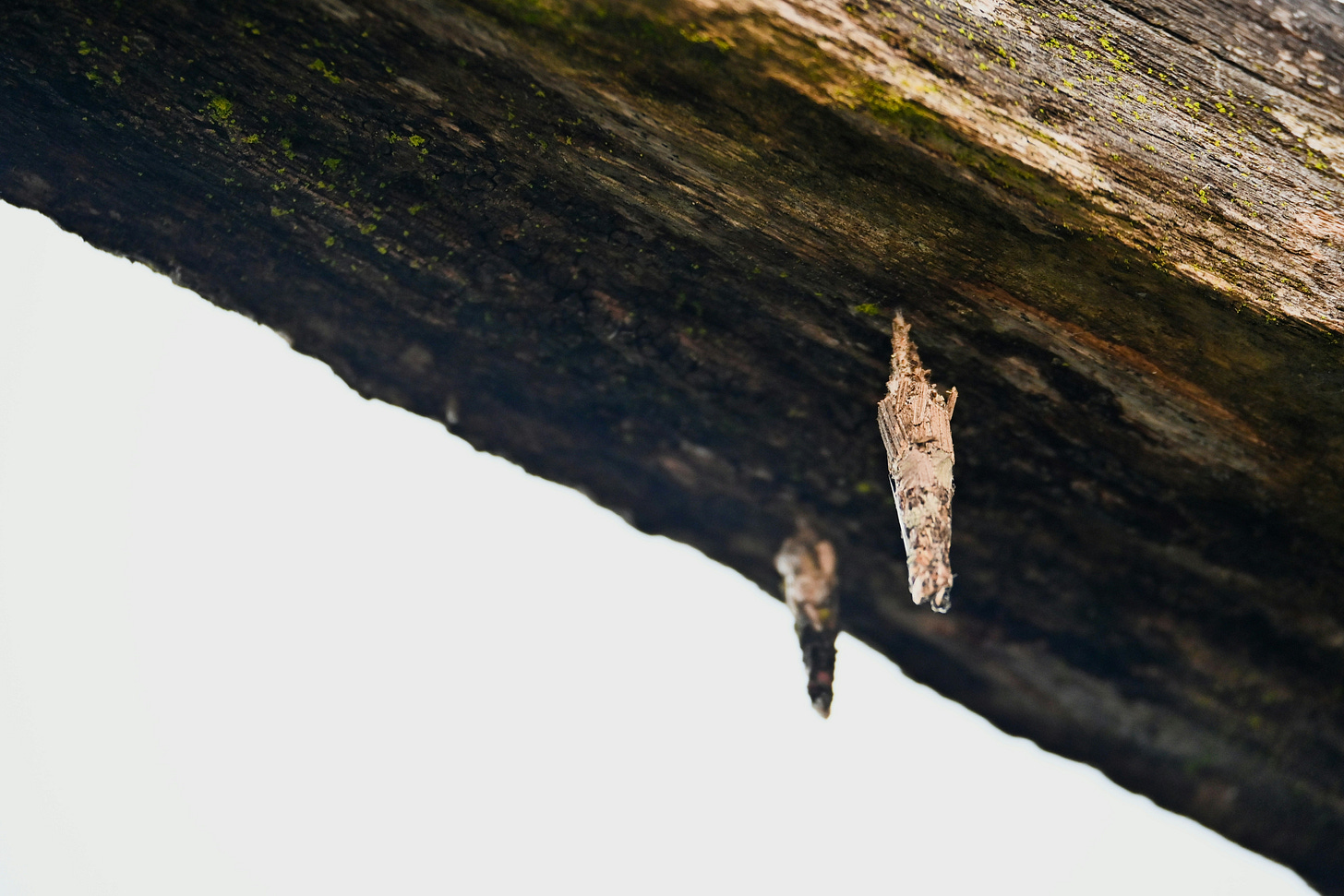The Cocoon
1 John 3:2-3 - Beloved, now we are children of God; and it has not yet been revealed what we shall be, but we know that when He is revealed, we shall be like Him, for we shall see Him as He is. And everyone who has this hope in Him purifies himself, just as He is pure.
In the fourth watch of the night, the church is only lit only by a few candles. Prayers are being said softly by the presiding hieromonk. Silence fills the air in the nave so that only his soft prayers to God can be heard by the ear that is attuned to listen. He who has ears to hear, let him hear those prayers and pray with the priest. The monks move with muffled steps across the solea without making a sound or any movement so as to distract the reverence of the service. They light a candle above the icon of Christ and another above the icon of the Theotokos before disappearing back into the wings of the church.
Orthros is in full swing and the chanters chant Psalm 50 (LXX) and the hieromonk emerges from the behind the altar and goes through the Royal Doors onto the solea. He is adorned in his priestly vestments with the klobuk veil draping down his back. In his hands he holds a well-worn fabric bound Gospel with a silver embossed icon of Christ in the center. The hieromonk takes his klobuk veil and drapes it over his shoulders. He tucks his hands under the phelonion so that his hands are completely hidden and holds the Gospel with his phelonion covered hands. Then like a larva ready to begin metamorphosis, he tilts his head down, he leans his shoulders forward, he bends his knees to lower himself, and lifts the Gospel in front of his face. None of his face, hands, or feet can be seen. None of him can be seen.
In his silk vestments, he has cocooned himself. All that is visible is the Gospel with the icon of Christ. The monks, nuns, and parishioners come to venerate the Gospel. I approach in silence and look upon the silver icon of the Lord Jesus. None of the priest can be seen because he has set his pride and ego to the side and decreased that Christ may increase. He is encased in a protective sheath with the Lord in front of him. His cocoon conceals his asceticism, his almsgiving, his virtues, his wisdom, his struggle. All that we can see is the icon of Christ which he holds in front of himself as he undergoes a transformation in his church silk cocoon.
Indeed, this is all that the priest wants others to see: the image and likeness of Christ. The priest doesn’t want to be seen, he doesn’t want to be known. He has determined only to know Christ and Him crucified.
I place my right hand on the soft worn fabric of the Gospel cover and with my unworthy lips, gently kiss the feet of Christ on the icon. The priest is motionless. The priest remains in a seemingly breathless silence as he waits for us all to venerate the icon of Christ while he himself is obscured from our eyes.
Then after the last person has venerated the icon of Christ, he emerges from his cocoon and throws back the klobuk veil off his shoulders. He stands upright and tall with the Gospel in his visible hands. By God’s grace, he is transfigured during the passing of time. By God’s grace, he is deified in the struggle to hold Christ up higher than himself. By God’s grace, he is divinized in the humility of only showing Christ to others. The priest turns his back to the nave and walks through the final Royal Doors with Christ.


